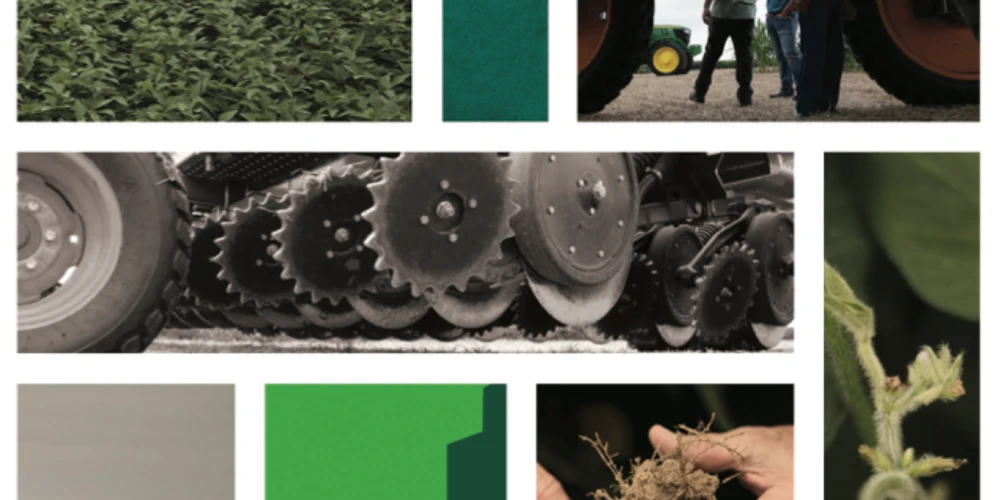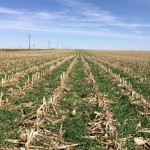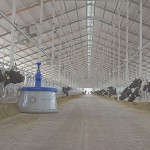Unlocking the Potential of Regenerative Agriculture
Added 3 weeks ago

As Illinois farmers look to boost soybean yields while enhancing environmental stewardship in 2025, regenerative agriculture presents a valuable holistic approach worth exploring. In many ways, it builds on the longstanding efforts farm families have invested in for generations.
“I see regenerative agriculture as a mindset—essentially, doing the best you can with all available tools to leave the soil in better condition than you found it,” says Ross Bricklemyer, Ecosystem Services Modelling Strategy Lead at Bayer. “Many farmers are already successfully applying regenerative practices, turning this philosophy into meaningful change.”
The Driving Forces Behind Regenerative Ag
Both agronomic and societal factors are propelling the shift toward regenerative agriculture. With the increasing frequency of droughts and heavy rainfall events, improving farmland resilience has become a priority. At the same time, consumer demand for sustainably sourced food and feed continues to grow.
“From individual consumers to large corporations, there’s a growing recognition of the need to reduce carbon emissions and restore ecological balance within our food system,” Bricklemyer explains. “Regenerative agriculture aligns perfectly with this goal.”
Understanding Regenerative Agriculture
Some prefer terms like climate-smart agriculture, but Bricklemyer favors regenerative ag. As a soil science expert with a Ph.D. from Washington State University, he believes the science-based conservation practices supporting regenerative ag will stand the test of time, regardless of political shifts in Washington, D.C.
“Regardless of how a new administration frames climate-smart agricultural programs, the on-farm benefits of regenerative practices remain unchanged,” he says. “Additionally, voluntary carbon markets are driving agriculture value chain companies to partner with farmers to implement these practices. The good news is that these sustainability-focused methods offer real benefits to both farmers and the food industry.”
Regenerative agriculture includes well-established methods such as plant breeding, crop rotation, cover cropping, and reduced tillage. It also encompasses newer approaches like supplementing commercial fertilizers with manure, using precision nitrogen management, and adopting biological crop protection products. When combined, these strategies offer multiple benefits:
-
Increased Productivity & Profitability – Improved soil organic matter, nutrients, and moisture levels help reduce irrigation, fertilizer use, and fuel consumption.
-
Enhanced Soil Health – Practices like reduced tillage and cover cropping enhance carbon sequestration, prevent erosion, improve water retention, and create a healthier habitat for plants and wildlife.
-
Better Water Quality & Conservation – By preserving soil structure and minimizing runoff, regenerative practices mitigate flooding and reduce pollutants reaching groundwater.
-
Lower Greenhouse Gas Emissions – Agriculture is a significant contributor to global emissions, but regenerative practices can both reduce emissions and capture carbon in the soil. Carbon markets further incentivize farmers to adopt sustainable methods.
-
Boosted Biodiversity – Healthy soils support millions of beneficial microbes that enhance crop nutrition, while conservation-focused practices provide habitat for wildlife.
These principles guide Illinois soybean farmers as they strive to balance productivity and sustainability in the 2025 planting season and beyond.
Key Trends to Watch in 2025
Three key aspects of regenerative agriculture—collaboration, data, and innovations in products and systems—are set to shape Illinois agriculture in the coming year.
-
Collaboration – Environmental partnerships are expanding, with many programs offering financial incentives, technical support, and resources for farmers. Bayer has launched 24 regenerative programs globally with 17 partner companies and is working with growers on nearly 4 million acres implementing regenerative practices.
-
Data-Driven Decisions – Increasingly, farmers can access real-time data to guide farm management, from tracking soil conditions and crop health to optimizing carbon capture and yield potential.
-
New Products & Systems – The regenerative ag toolkit continues to evolve. Future developments may include biological products, enhanced rock weathering for soil pH balance, and livestock integration with cover crops to accelerate carbon storage and improve productivity.
Getting Started with Regenerative Agriculture
Every farm is unique, but successful regenerative farmers often follow key principles. Bricklemyer shares the following insights:
-
Optimize Tillage Management – No-till or strip-till practices are fundamental to unlocking regenerative ag’s benefits.
-
Select the Right Cover Crops – Choose species that suit your region and timing constraints while keeping implementation as straightforward as possible.
-
Understand Carbon Market Realities – While carbon programs offer additional income, their verification requirements demand careful record-keeping and compliance.
-
Seek Expert Advice – Tap into insights from agronomists, university extension specialists, and experienced farmers.
-
Start Small & Build Over Time – Experimentation is key to finding a system that works best for your operation.
Beyond individual farm operations, Bricklemyer urges Illinois soybean farmers to engage with policymakers in 2025 to ensure continued support for conservation programs.
“Congress will face budget pressures when allocating funds for agricultural programs within the Farm Bill,” he notes. “It’s up to farmers and the ag value chain to advocate for policies that support regenerative practices. These efforts not only improve soil health and resilience but also enhance yields and overall farm profitability.”
By embracing a regenerative mindset—whether in crop production, resource stewardship, or advocacy—Illinois farmers can drive positive outcomes in 2025 and beyond. With careful planning, gradual implementation, and ongoing learning, the potential benefits for farms and the broader agricultural landscape are substantial.
Join the conversation
Be the first to leave a comment.
Leave a comment
All comments are reviewed before they are published on the website. Your email address will not be published.






